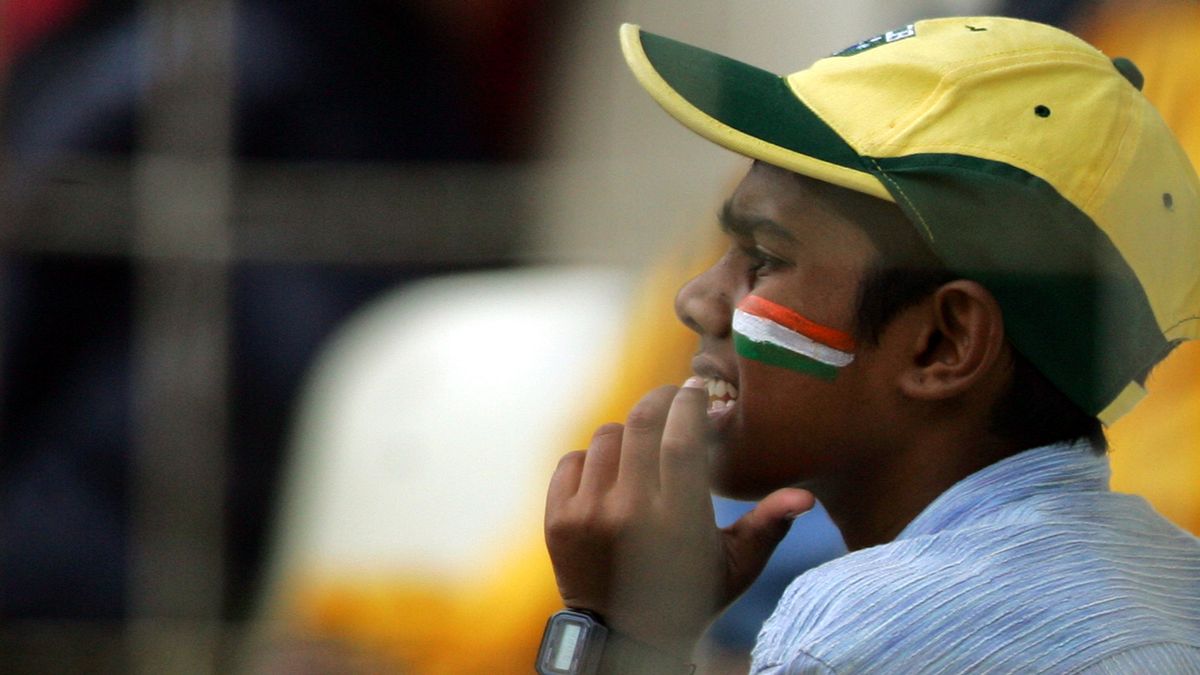In terms of population size and medals won, there is no worse Olympic performer than India. It seems strange that a country of more than 1.2 billion people can only collect an average of less than one medal per Games. Beijing 2008 was India’s most successful Olympics to date; it finished with one Gold and two Bronze medals. That is over 383 million people per medal, the highest ratio of all competing nations at Beijing.
It would be untrue to say that India does not produce good sportsmen and women: in cricket, the country’s passionate obsession, it has in Sachin Tendulkar one of the sport’s greatest ever players. The Indian cricket team holds the world one-day title and was until recently the Number 1 Test team in the world. The Indian men’s field hockey team won six consecutive Olympic Golds in the mid-20th century (field hockey accounts for more than half of India’s historical total of 20 Olympic medals).
There is no doubt that India has sporting talent, so why does it fail to translate this into Olympic success?
There have been some academic studies that suggest the total population of a country is irrelevant when it comes to Olympic medal tallies, but that rather what counts is the part of a population that participates effectively in sports. Anirudh Krishna and Eric Haglund argue in a 2008 report in the Indian publication Economic and Political Weekly
that “Olympians are drawn, not from the entire population of a country, but only from the share that is effectively participating. Low medal tallies can arise both because a country has very few people and because very few of its people effectively participate.”
They go on to contend that there are certain factors that limit effective participation. Those factors, they say, are health, education, public information and what they call ‘physical connectedness’ i.e. a population’s ability to travel. In other words, an unhealthy individual is unlikely to participate in sport; an educated individual is likely to be more ambitious and school attendance increases the chance that talent will be spotted and developed; in terms of public information, an individual can only aspire to be an Olympic athlete if he or she has heard about the Olympics via the media; and where there is little ‘physical connectedness’ in remote, isolated villages, many sporting jewels may go undiscovered. In rural India, where life expectancy and primary school enrolment are below the world average and where there is more limited access to the outside world both physically and communication-wise, much of the effective participating population is lost.
But the 2011 Indian Census tells us that the urban population in India is over 370 million people, the equivalent of the USA and Russia combined. That is still a massive pool of talent and one that is becoming wealthier at a faster rate than almost anywhere else on Earth. So the question remains: why the lack of medals?
Madhuli Kulkarni is the founder of the ALTIUS Centre for Excellence in Delhi. As a sports psychologist she has worked with hundreds of top Indian athletes. She believes that traditionally, sport has always taken a back seat to studies for young Indians, or in any case the parents of young Indians. She told euronews:
“Parents here have the authority to take the decisions in their child’s life. India was not a sports nation. Especially post-independence, Indian parents gave a lot of importance to academics and sport was considered as a “time pass” activity or just for recreational purpose. Sport was never a priority for a majority of parents and their kids. In fact we have a saying in Hindi – India’s National language – “Kheloge kudoge to honge kharab, padhoge likhoge to banoge nawab” which means that your life will be a waste if you play but if you study or do well in academics you will be a king.”
With the emphasis on academic rather than physical education, Madhuli says that “although we have the best of the academic schools and universities, we do not have good sports facilities and good sports academics. We did not have well maintained playgrounds; equipment was not available and if it was, then it was not in good condition, no proper support staff, no athlete-friendly sports policies.”
Madhuli also points to corruption, favouritism, apathy and bad management among sports’ governing bodies as turn-off to young Indian sportspeople. However she does believe that, while India still has a long way to go, things are looking up.
“We are still in the developing phase. Young Indians are given opportunity but the facilities and opportunities are not enough, we still have to improve a lot. Things are definitely changing now and are changing for the better. Therefore you will see an improvement in the performance of our athletes in the London Olympic Games,” she promises.
India does have several reasons for optimism: Beijing provided its best medal total and it is sending its largest ever delegation of athletes to the Games (81) which includes real medal prospects in wrestling and shooting. Those athletes can also expect plenty of support from the large Indian community in London. Nobody is expecting miracles, but success breeds success; if any Indian heroes do emerge from London, there are hundreds of millions of youngsters back in India ready to try and emulate them.

 Hosts with the most: why home advantage brings more Olympic medals
Hosts with the most: why home advantage brings more Olympic medals Why are Australians so good at sport?
Why are Australians so good at sport? What does it take to win an Olympic medal?
What does it take to win an Olympic medal? Planned economies obsessed by the need to succeed
Planned economies obsessed by the need to succeed